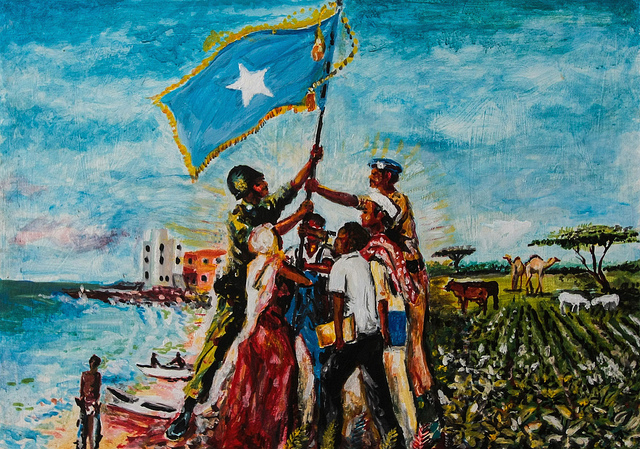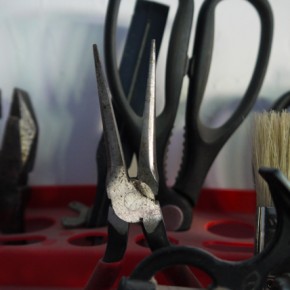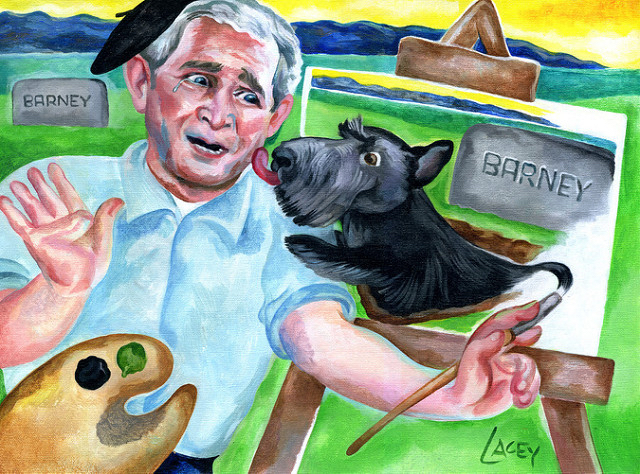Somalia’s PR strategy is violence. Or so one might be inclined to think, based on press coverage of Nairobi’s spectacular Westfield mall attack by al-Shabaab gunmen (and apparently women.) The last time that Somalia fanned comparable ripples in US media culture was during the Battle of Mogadishu, a highfalutin moniker for the botched commando raid in 1993, in which 18 American soldiers and an estimated 1000 Somalis were killed.
The lurid images of the bodies of dead Army Rangers being dragged through the streets transfixed the American public, with terrible consequences. It deflected public attention both from the horrific casualties suffered by the Somalis, and from the complex and ill-conceived nature of the mission that the United States had undertaken there, on behalf of the United Nations.
The attack on Nairobi’s Westgate center was different in many important respects. The Kenyan capitol is the polar opposite of Mogadishu: clean, well organized, urbane, a place where grim poverty is sequestered in the peripheral shanty towns. It’s one of the great tourist hubs of East Africa, and there is absolutely nothing coincidental about the target. What knits the two events together is the degree to which it has reminded the developed world that Somalia is a problem to be dealt with, whether with humanitarian or military means, lest more lurid images of victims discourage local shoppers, and Africa’s adaptation of global commodity culture.
In the intervening period between Black Hawk Down and now, much has changed in Somalia. In 1993 the country was enduring the chaos following the collapse of Siad Barre’s nationalist regime. The power vacuum left by the disintegration of Barre’s government was filled by the clans that had made up Somalian society for centuries, alienated by Barre’s attempts to modernize the country and transformed into a plethora of armed militias. This situation illustrates the incredible complexity of Somalia as a site of foreign intervention. Somali society is shaped by four or five major clan groups (the exact number depends on who one is talking to and where) and something like 140 subclans. Mohammed Farrah Aidid, the notional target of the Black Hawk Down raid, was a leader in the Habr Gidr subclan of the Hawiya clan. He was not a particularly sinister figure by the standards of Somali politics, but simply the most powerful leader, a man who had realized that in a place where guns outnumber people, the road to political control is paved with food. The failure of US attempts to apprehend Aidid, and the deaths of eighteen soldiers, convinced the Clinton administration to deescalate US involvement, and for the best part of two decades Somalia was the problem of the UN and of its neighbors.
The formation of the Islamic Courts Union in the early oughties was the most significant development in the history of Somalia since decolonization. The ICU comprised a range of tendencies, some strongly influenced by Salafist Islam of the Arabian Peninsula, others more sympathetic to the Sufist Islam indigenous to Somalia itself. By 2006, the movement was strong enough to extend its control from its strongholds on the southern coast south into Gedo and Jubbaland, and north to the capital. Although some tendencies of the ICU promoted a severe version of Sharia, the movement in general was met with sympathy by many because it clamped down on the violence and corruption of the clan rule that it superseded.
Although the ICU wrought some important positive effects, a political movement committed to the institution of Sharia Law was bound to be viewed as a threat by the United States in the post 9/11 world. Washington partnered with the UN and the African Union to back a secular central government, the Transitional Federal Government, comprising figures from a number of the leading central region clams. The period between 2006 and 2012 saw almost continuous warfare, as foreign troops, starting with an invasion by Ethiopian infantry, forced the ICU out of Mogadishu, and cleared it out of many of its southern stronghold (most prominently the port of Kismayo.)

This is where the story gets more complicated. Southern Somalia sits at the nexus of a range of national and international agendas. In the course of its military reverses, the ICU fragmented. The most prominent successor group was al-Shabaab (“the youth,”) a movement both militarily strong and committed to an extreme version of Salafism. Their agenda was both national and regional. In addition to the interests of the internal players, the southern regions of Somalia are also the objects of intense interest from both Ethiopia and Kenya. Both countries are interested in preventing the infiltration of Islamist influences into predominantly Islamic regions of their own territory that abut Somalia: Kenya’s Northeastern Province, and the Ogaden region of eastern Ethiopia. In addition to worries about the political situation in Ogaden, where the Ethiopian government faced a persistent insurgency from 1993 to 2008, Ethiopia has a further regional interest. As a landlocked country, the goal of access to the Indian Ocean continues to influence Adis Abbaba’s regional policy.
Kenya too has a hand in the situation. Nairobi supported several proxy forces fighting against al-Shabaab, before sending their own troops into Jubbaland. The situation underlined the belief among several multinational energy corporations that there are unexploited oil and gas resources off of the southern Somali coast. Both Kenya and Ethiopia have an interest in claiming and developing these resources.
In a 2011 interview with the journalist James Ferguson, the incoming British ambassador Matt Baugh said of Somalia, “It is not a geographical country, but a diffuse, global entity – and that is not physically containable.” With some 2 million Somalia expatriates scattered around the world, the potential for internal instability to breed external consequences is considerable. This is true not only in Ethiopia and Kenya, which also have considerable indigenous ethnic Somali minorities, but also in countries in the industrialized world. Both Great Britain and the United States are home to hundreds of thousands of Somalis, a large proportion of whom have not been sufficiently economically and culturally integrated. Living poor in the midst of plenty, Somali expatriate communities have proven to be a fertile recruiting ground for Al Shabaab, with the story of the twenty or so young Somalis from Minneapolis who snuck away to join the organization being only the most prominent instance of a story that has frequently been repeated.
The attack on the Westgate mall was, in retrospect, anything but surprising. Al-Shabaab had previously warned the Kenyan government that they would respond to Kenyan military incursions into Somalia with attacks against the lucrative Kenyan tourist economy. The July 2010 suicide bomb attacks in Kampala, Uganda (once again in response to the incursion of foreign troops into Somalia) were prior evidence of their earnest intentions. But unlike the earlier atrocity, the attack on Kenya took place in an area frequented by Europeans, thus ensuring a much more considerable media footprint than it might otherwise have had. The staging of a raid in Beraawe by Navy SEALs in an attempt to capture an al-Shabaab commander is evidence of the degree to which the attentions of the industrialized world have now been refocused. That fact that it was staged in concert with another raid to capture an al-Qaeda suspect in Libya suggests that the US at least continues in its desire to execute its policies in this region through the application of military force. But it remains unclear how the seizure of particular individuals will change the overall system, just as it was not clear how the elimination of Mohammed Farrah Aidid would have changed the situation in 1993. The problem of global Somalia has proved itself resistant to the kind politics of covert incursion and drone warfare. There is every reason to believe that this will make situation less stable rather than more so. Two decades after the Battle of Mogadishu, many of the same dynamics are still in play.
Photographs courtesy of Albany Associates. Published under a Creative Commons license.





